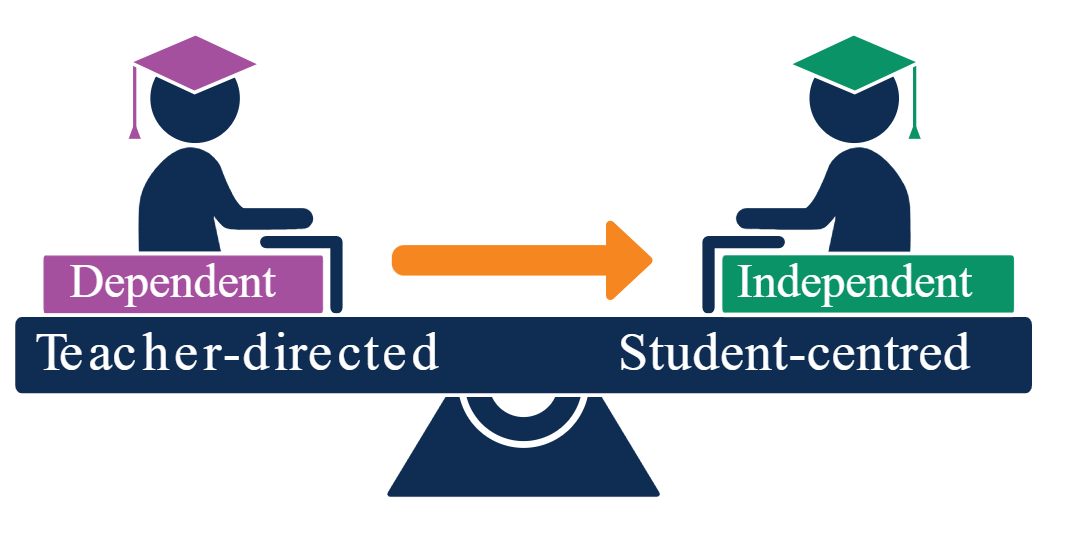At our school, we use a range of evidence-based teaching approaches to support every student to succeed. Two of the key pedagogical approaches we use are Explicit Instruction and Inquiry-Based Learning. These approaches are not separate, but rather work together to help students build essential knowledge, develop transferable skills, and become curious, capable learners for life.
Pedagogy
Explicit Instruction
Explicit instruction involves teachers clearly showing students what they need to learn and how to do it. This approach helps students to build strong foundations in essential skills such as reading, writing, and mathematics.
Our teachers follow a Gradual Release of Responsibility model. This means that teachers:
Model new learning ("I do"),
Guide students as they practise with support ("We do"),
Then support students to work independently ("You do").
We start each lesson with warm-ups to activate prior knowledge, build confidence, and get brains switched on and ready to learn. These routines also allow for spaced practice, which means revisiting key concepts over time to strengthen understanding and memory.
Throughout a unit, teachers use:
Teacher modelling to show exactly what successful learning looks like.
Learning walls in classrooms to display important concepts, vocabulary, steps, and success criteria.
Exemplars (strong examples of student work) to give students a clear idea of what they are working towards.
Student goal-setting to encourage ownership of learning and reflection on progress.
Feedback to guide improvement and celebrate achievement.
Explicit instruction supports learners by providing clarity, structure, and scaffolding—especially when students are building new knowledge or practising skills for mastery.

Inquiry-Based Learning
Inquiry-based learning is a powerful way for students to explore big ideas, ask questions, think deeply, and make meaningful connections with the world around them. It builds on the knowledge students gain through explicit instruction and gives them opportunities to be active, collaborative, and curious learners.
Our inquiry lessons are designed to foster 21st-century capabilities, such as:
Critical and creative thinking
Collaboration and communication
Self-management and reflection
Problem-solving and innovation
Each lesson follows a consistent structure designed to encourage deep thinking, student voice, and real-world application.

A Typical Inquiry Lesson May Include:
Lesson title and Big idea or overarching concept: The ‘big idea’ helps students make connections across learning areas and see relevance in what they’re learning.
Learning intention: Includes both content and a learner asset or transferable skill (e.g. As innovators or risk-takers, how can we effectively…).
Success criteria: Clear statements of what success looks like.
This is because…: Students explore why the learning matters in a real-world context.
“I wonder…”: Students are encouraged to pose questions and express curiosity.
Reflection on previous learning: Connecting prior knowledge to new understandings.
Inquiry Learning Sequence
Discover – Tuning in activity: A hook, object, image, or problem is introduced to spark curiosity and provoke questions.
First thinking: Students record their early ideas or understanding.
Devise – Finding out: Through research, discussion, or hands-on investigation, students gather information collaboratively.
Develop – Sorting out: Students analyse findings, look for patterns or meaning, and begin forming conclusions.
Thinking Routines from Harvard’s Project Zero: These help students organise, extend, and communicate their thinking.
Defend – Reflecting: Students reflect on their learning, share insights, and consider the role of learner assets (such as being collaborative, curious, or persistent).
Diverge – Going further: Students deepen their inquiry through additional research or real-world applications. This might include creating projects, presenting findings, or taking action based on their learning.

Learner Attributes and Positive Dispositions
To support collaboration, students are often grouped in fun and flexible ways to build teamwork and strengthen communication skills.
Teachers highlight a learner attribute or positive disposition for learning at the start of each lesson (e.g. being reflective, taking risks, showing persistence) and refer back to it during the lesson to build student awareness of how they learn.
Assessment and Differentiation
Teachers use a range of monitoring strategies, such as observations, questioning, student work and discussion to check in on progress and plan next steps.
We also ensure:
Support differentiation: Extra scaffolds, resources, or guided instruction for students who need it.
Extension differentiation: Opportunities for students to take their learning further, explore alternative perspectives, or lead a new line of inquiry.
At our school, we believe in teaching students how to learn, not just what to learn. By combining explicit instruction with rich inquiry opportunities, we aim to nurture capable, thoughtful, and creative young learners who are ready to meet the challenges of a changing world.